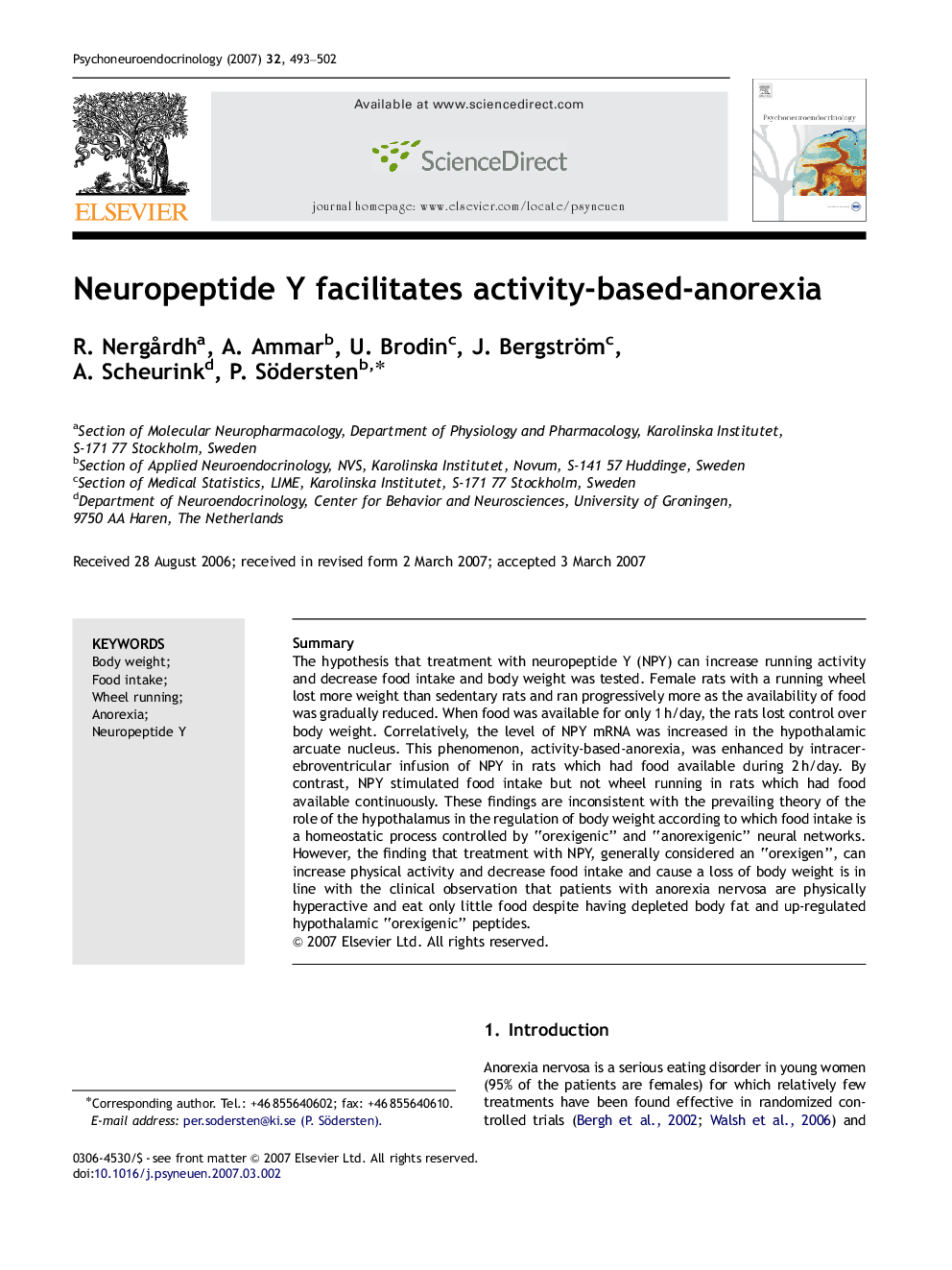| Article ID | Journal | Published Year | Pages | File Type |
|---|---|---|---|---|
| 337416 | Psychoneuroendocrinology | 2007 | 10 Pages |
SummaryThe hypothesis that treatment with neuropeptide Y (NPY) can increase running activity and decrease food intake and body weight was tested. Female rats with a running wheel lost more weight than sedentary rats and ran progressively more as the availability of food was gradually reduced. When food was available for only 1 h/day, the rats lost control over body weight. Correlatively, the level of NPY mRNA was increased in the hypothalamic arcuate nucleus. This phenomenon, activity-based-anorexia, was enhanced by intracerebroventricular infusion of NPY in rats which had food available during 2 h/day. By contrast, NPY stimulated food intake but not wheel running in rats which had food available continuously. These findings are inconsistent with the prevailing theory of the role of the hypothalamus in the regulation of body weight according to which food intake is a homeostatic process controlled by “orexigenic” and “anorexigenic” neural networks. However, the finding that treatment with NPY, generally considered an “orexigen”, can increase physical activity and decrease food intake and cause a loss of body weight is in line with the clinical observation that patients with anorexia nervosa are physically hyperactive and eat only little food despite having depleted body fat and up-regulated hypothalamic “orexigenic” peptides.
